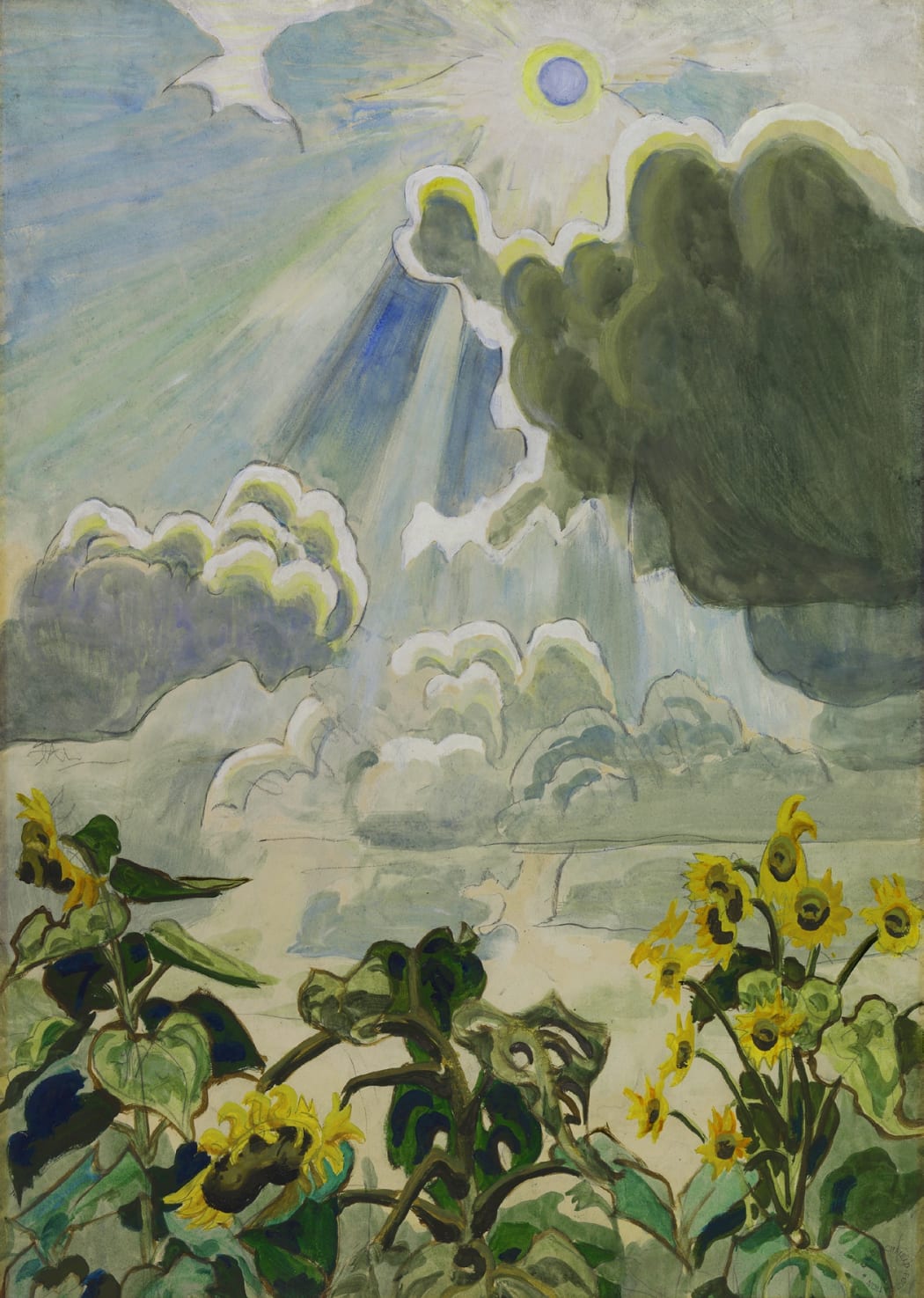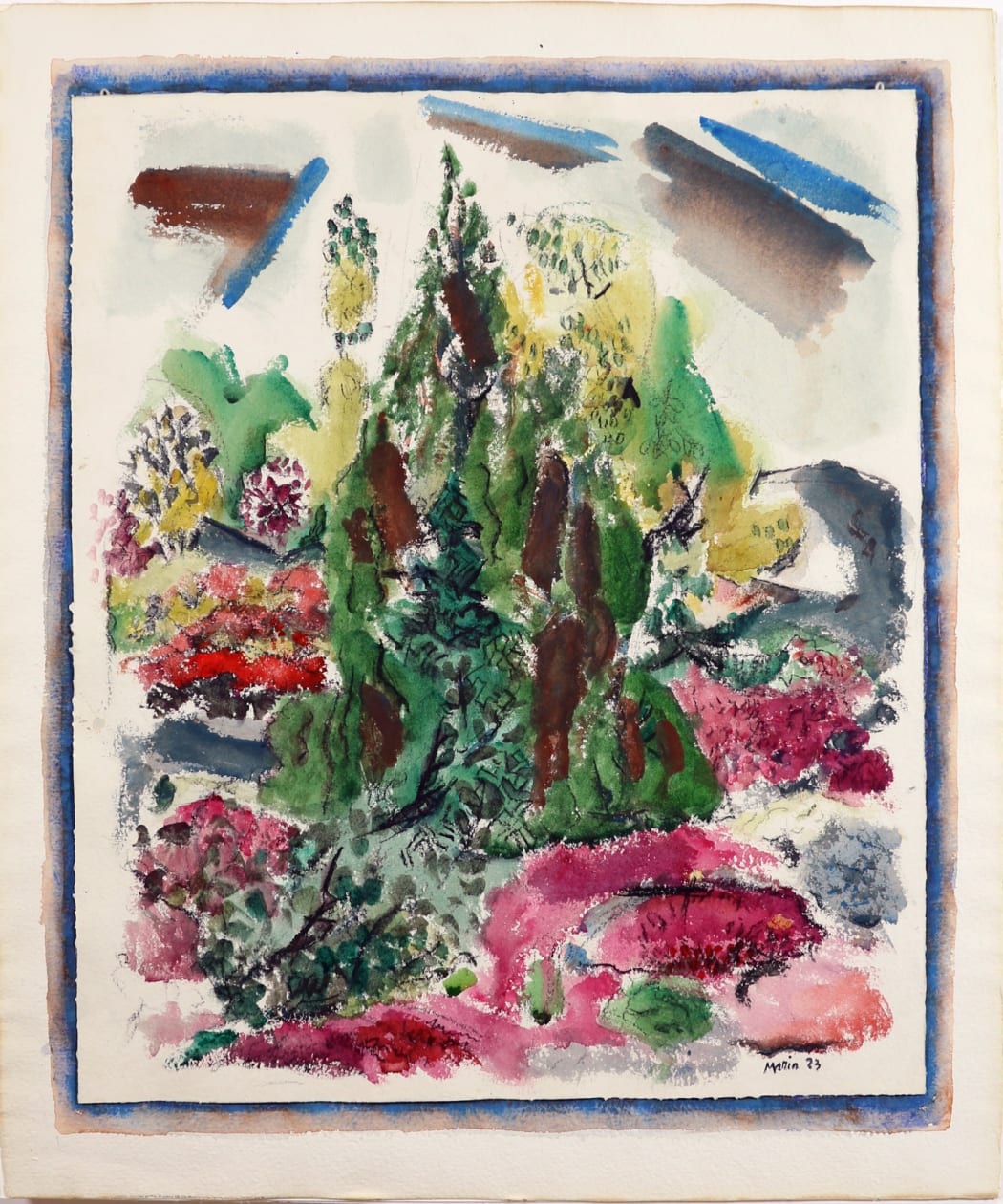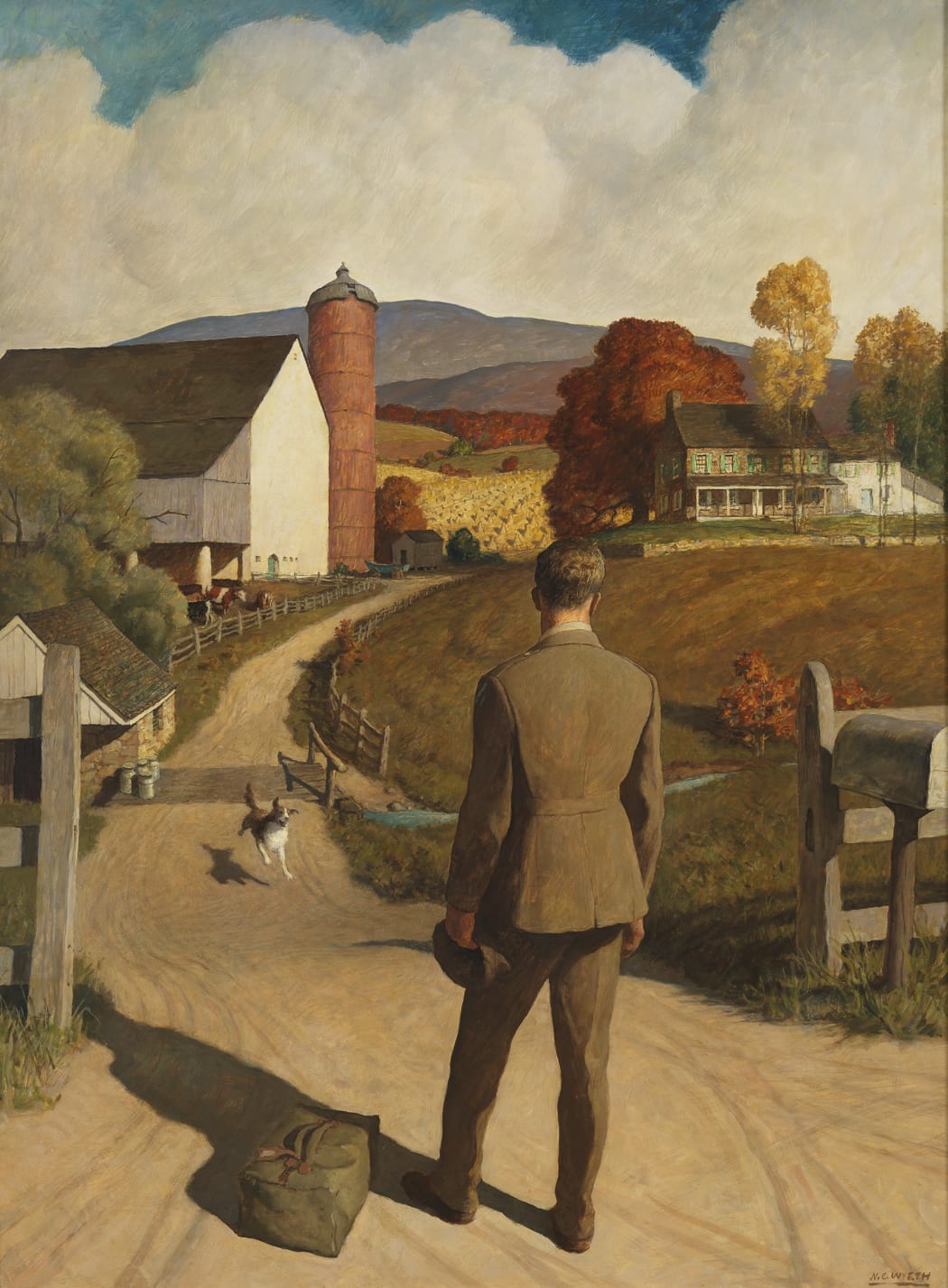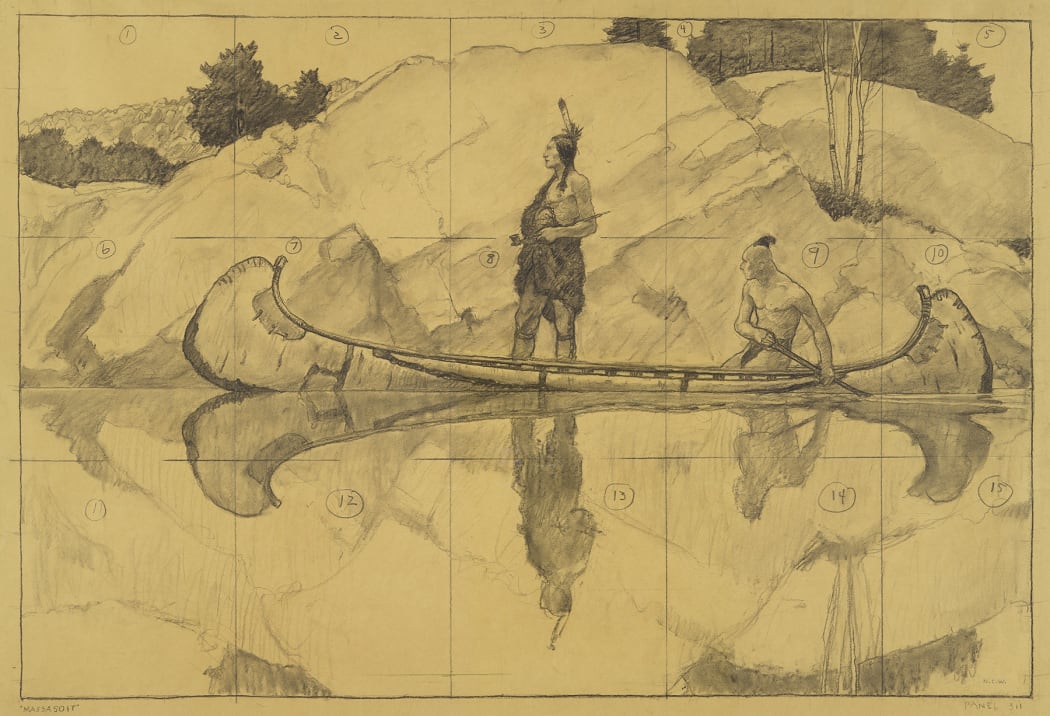-
 Charles Burchfield, Sunflowers, 1916-1922
Charles Burchfield, Sunflowers, 1916-1922 -
 John Marin, Weehawken Sequence, by 1916
John Marin, Weehawken Sequence, by 1916The Weehawken Sequence
and early forms of abstraction“Especially interesting is a group of thirty-one small sketches painted on the Weehawken cliffs in 1903 and 1904 [sic.], for they reveal perhaps better than his watercolors and etching of six years later the characteristic mark of his style—a syncopated tilt, an angular askewness. They are, however, painted in areas, without the separation into line and area that he later developed more and more. The color without being fantastically bright, is Fauve-ish.”
—Fairfield Porter “The Nature of John Marin” ArtNews, March, 1955
-
 John Marin, Movement, Sea Played with Boat Motive, 1947
John Marin, Movement, Sea Played with Boat Motive, 1947Marin and the Critics
John Marin's Legacy“American painting is well ahead. It’s a paradoxical situation when someone like Rauschenberg—who’s nowhere nearly as good as Eakins, Homer, Ryder . . . not to mention Marin—is viewed a major figure because of the credit American art in general now enjoys in the world.”
—Clement Greenberg in an interview with Lily Leino, 1969
-
 John Marin, Dance of the Pueblo Indians, 1929
John Marin, Dance of the Pueblo Indians, 1929Marin in New Mexico
a new frontier“The present exhibition reveals Marin’s response to New Mexico and includes one room of superb New York subjects . . . Nothing comparable on this theme has ever been done. Superlatives should of course be used with the utmost caution; but in this case one feels impelled to let go.”
—Edward Allen Jewell, “New Marin Water-Colors,” The New York Times, 1930, January 5, 1930, p. 12
-
 John Marin, Little Fir Tree, Deer Isle, 1921
John Marin, Little Fir Tree, Deer Isle, 1921The Painter of Maine
on Marin's love of location“Stonington, Me., has given itself to John Marin. He has painted it looking outward and looking inward, houses and rocks and yellows and grays, from within the three-mile limit and well outside the limit; he has painted its cows and its calves, its ‘rocks and sea motions,’ its ‘tree shapes blue and green,’ its ‘sea shapes,’ all its shapes, all its colors, and still he goes on painting it. All his pictures are experimental, Mr. Stieglitz says, but it is pleasantly possible to add that all his experiments are pictures. No one ever had a more seductive palette.”
—“Art at Home and Abroad,” The New York Times Magazine, October 21, 1917, p. 12
-
 John Marin, Autumn, 1923
John Marin, Autumn, 1923 -
 John Sloan, Gray and Brass, 1907
John Sloan, Gray and Brass, 1907The Metropolitan Museum of Art Acquires AshCan Masterpiece
The MET announces acquisition of John Sloan's 'Gray and Brass' from 1907The Metropolitan Museum of Art announced in 2019 its acquisition of an Ashcan masterpiece, John Sloan’s Gray and Brass (1907). In a review of a 1965 biography on Sloan, James Thomas Flexner summarized the moment of the work’s creation:
-
 John Marin, Weehawken Sequence, by 1916
John Marin, Weehawken Sequence, by 1916 -

-
 N.C. Wyeth, The Homecoming, 1945
N.C. Wyeth, The Homecoming, 1945 -
 N.C. Wyeth, From the Stern to the Pilot House they Danced and Struck and Howled, 1915
N.C. Wyeth, From the Stern to the Pilot House they Danced and Struck and Howled, 1915 -
 N.C. Wyeth, Massasoit, c. 1945
N.C. Wyeth, Massasoit, c. 1945 -
 N.C. Wyeth, The Lightning Blazed Out Flash Upon Flash, 1916
N.C. Wyeth, The Lightning Blazed Out Flash Upon Flash, 1916 -
 N.C. Wyeth, The Duel on the Beach, 1920
N.C. Wyeth, The Duel on the Beach, 1920 -

Precision by the Numbers
By Jonathan SpiesIt begins, like so many things, with Alfred Stieglitz. Well, you can trace them back further, but various strands of social and political thinking, art-making, and historical conditions began to crystalize around New York’s locus of modernism, the Little Galleries of the Photo Secession. Better known as 291: a numerical gallery for a numerical age.
Subscribe to our mailing list to receive updates from the gallery
* denotes required fields
We will process the personal data you have supplied in accordance with our privacy policy (available on request). You can unsubscribe or change your preferences at any time by clicking the link in our emails.
